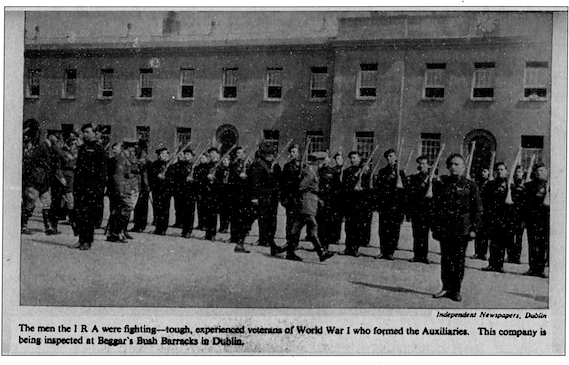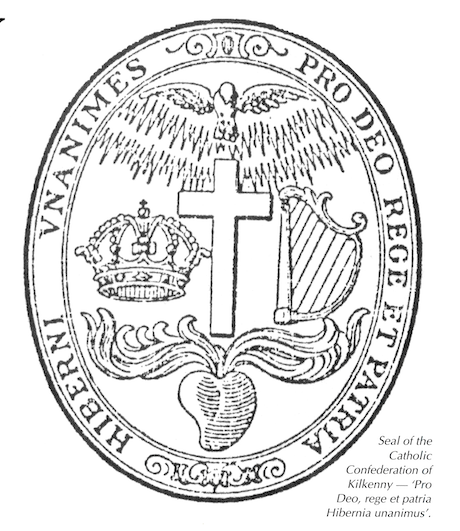Landscapes of South Ulster
Sir — I was more than surprised to read in Brian McDonald’s review of Landscapes of South Ulster (HI summer 1994) that included in Clogher diocese were ‘a single parish in south Donegal and…seven townlands of County Louth’. The volume itself is quite explicit in showing two Donegal parishes (Pettigo and Magh Ene) and twenty-six townlands in County Louth (seven in Inniskeen parish and nineteen in Killany). — Yours etc.,
PHILIP BUTLER
Navan Road,
Clonee,
County Dublin.
Not Black and Tans?
Sir, — Your correspondent Elizabeth Malcolm is not quite correct in stating that the Auxiliaries never wore RIC uniforms. The enclosed photo (plus several others) speaks for itself. Most of this pro tem force wore the regular constabulary tunic and trousers (with badge only). No other elements (caps, etc.) were permissable. — Yours etc.,
JAMES W. McCOY
Ardbrach,
Kinsale,
County Cork.

Sir — The correct usage of ‘Black and Tans’ is not quite so simple as Elizabeth Malcolm’s letter suggests (HI summer 1994). The fact that (as she points out) the English recruits into the regular RIC were properly outfitted by the autmun of 1920, and thus no longer visually different from the long-service constables, left the Auxiliaries as the only conspicuously novel formation in Ireland. It appears from the evidence I have seen that the label ‘Black and Tan’ was thence applied pre-eminently to them, though it may also have been applied to vocally non-Irish members of the regular RIC. Resonant lines from contemporary ballads (e.g. ‘the Tans in their big Crossley tenders’) make this quite clear.
It seems wrong to say, as Ms Malcolm does, that the Auxiliaries were not police officers: their police training was admittedly perfunctory, but the same was true for all the non-Irish RIC recruits after December 1919. And however independent it may have been at the operational level (not quite so independent as she suggests), the Auxiliary Division was part of, not ‘a separate body from’, the RIC. In the British legal system, they must have been policemen since they were not soldiers — her use of the term ‘paramilitary’ would have been unknown at the time. — Yours etc.,
CHARLES TOWNSHEND
Dept. of History,
Keele University,
Staffordshire,
England.
Confederate seal

Sir, — I am intrigued by the three versions of the words on the seal of the Confederation of Kilkenny (HI summer 1994). The text of the article reads ‘pro Deo, pro rege et patria Hibernia unanimis’; the caption under the illustration reads ‘Pro Deo, rege et patria Hibernia unanimus’; whereas the large lettering on the seal itself clearly spells out the message ‘Hiberni unanimes pro Deo Rege et Patria’, which means, literally, ‘Irishmen of one mind for God, the King and Country’. Perhaps the five symbols on the seal have a meaning for those who would like to see a ‘confederation’ of the Irish people today—that the desired union of the of the crown and the harp, through the power of the cross of Jesus, should be based on hearts burning with love and inspired by the dove of divine peace. Yours etc.,
IGNATIUS FENNESSY
Franciscan Library,
Dún Mhuire,
Seafield Road,
Killiney,
County Dublin.
